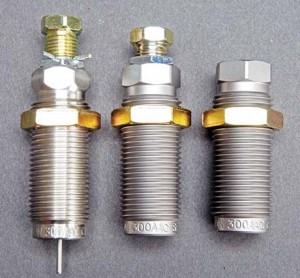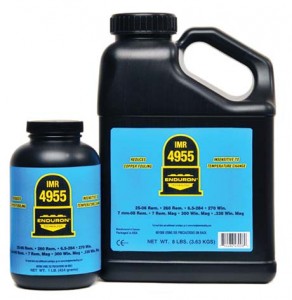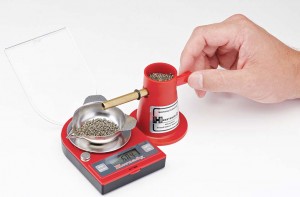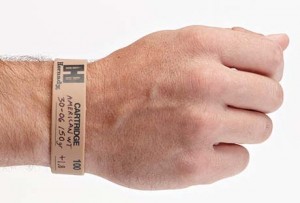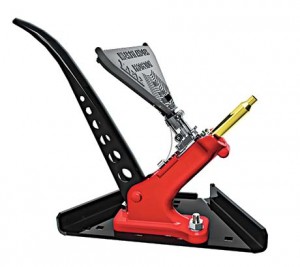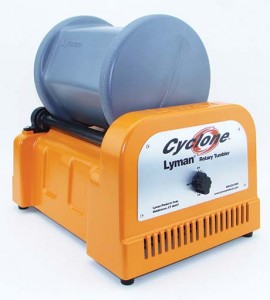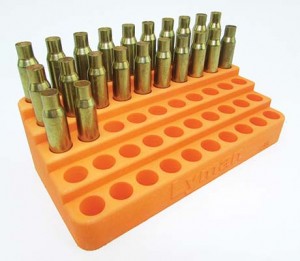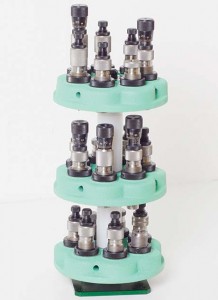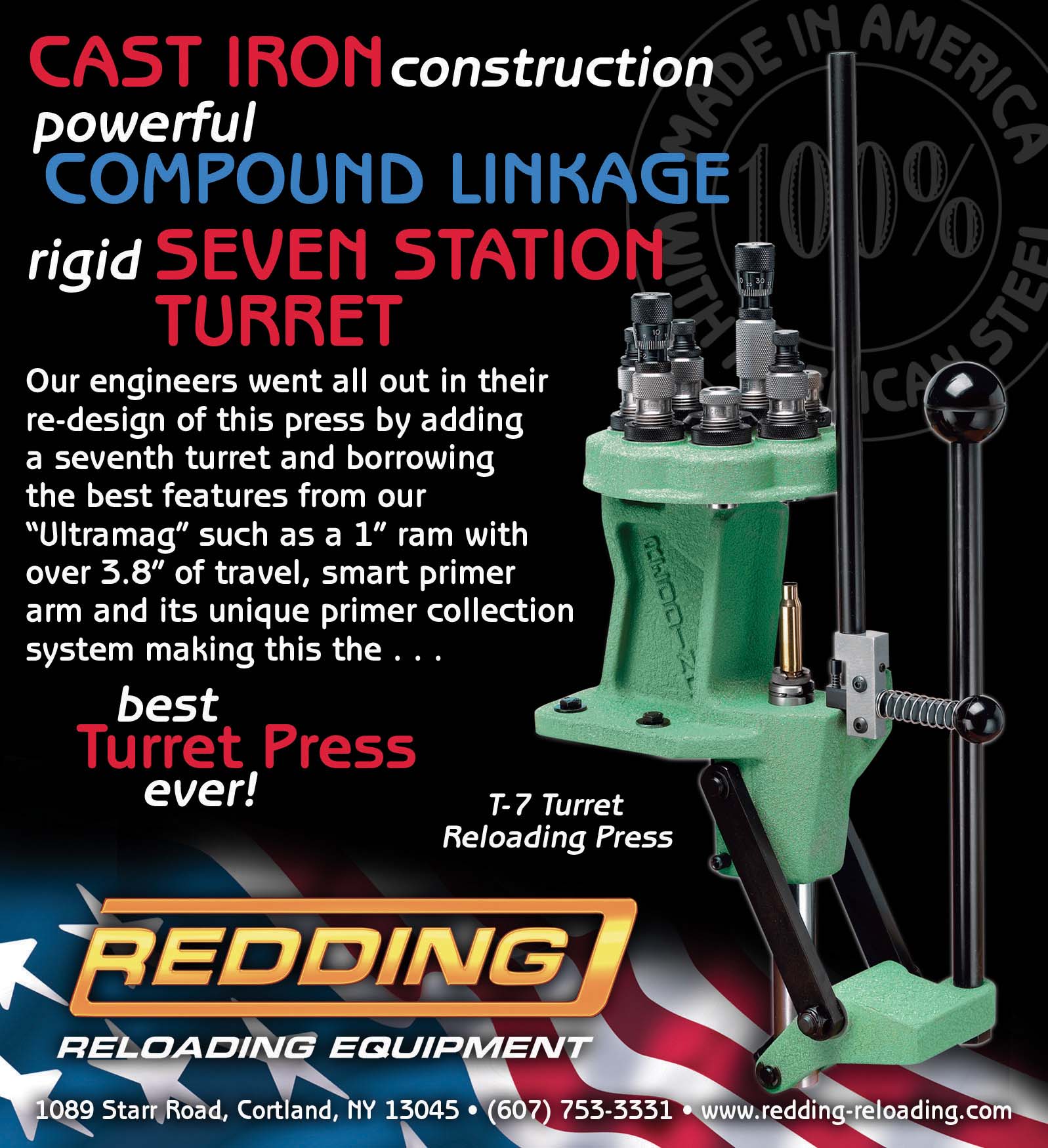by Art Merrill | Contributing Editor
Handloaders may well be the most inventive bunch on the planet, always adapting something from the kitchen, the garage or the hardware store to make loading easier or more efficient. New handloading products for 2016 will be shown at the Shooting, Hunting and Outdoor Trade (SHOT) Show in Las Vegas in January. Clearly many spring from such adaptations, and perhaps one or two here prompted that “Aha!” moment from the inventor, like the one long ago when someone first thought of actually placing the eraser on the end of the pencil.
Dillon
The Boys in Blue have a new carbide die for one-step forming of .223 Rem cases into .300 Blackout, as well as a complete 3-die set for reloading them. “The forming die is good for 750,000 to 800,000 cases,” said Dillon Marketing rep Gary Kieft. That should last you two or three seasons, right? MSRP for the forming die is $149.95; for the set it’s $172.95.
Hodgdon
Continuing its series of Enduron™ powders, Hodgdon’s new IMR-4955 is suitable for the .25-06 through .300 Win Mag family of cartridges. Enduron powders have an additive that lessens fouling from copper jacketed bullets and compared to standard powders they have less sensitivity to outdoor temperature variations that cause changes in ballistic performance. Small granule size makes for better flow through powder measures, too. Available in 1- and 8-pound containers, MSRP $29.99 and $212.99, respectively. Free load data at the Hodgdon Reloading Data Center online at: imrpowder.com.
Hornady
The Hornady G2-1500 electronic scale is a compact, wireless (runs on two AAA batteries) scale for use with a powder trickler. The G2-1500 has an industry-standard 1/10th grain accuracy up to 500 grains with a max measuring capacity of 1,500 grains. Small electronic scales are great for quickly weighing bullets or cases and especially where loading benches are of limited size. MSRP $39.20
Hornady has adapted the idea of a food dehydrator to speed up the drying of cases and gun parts after liquid/ultrasonic cleaning. The electric Case & Parts Dryer features three stackable trays and a spacer for taller parts and has the capability of drying hundreds of cases at a time. MSRP $76.67
If you’re considering a new press or your first reloading press, Hornady’s new Iron Press™ is worth a look. Its beefy 26 pounds of cast iron differs from other single-stage presses in featuring a spring assist for the ram and lots of hand clearance at the shellholder. Especially useful for handloaders with limited space, the top of the press has storage space for several manual case prep hand tools and dies, and can hang a plastic bin for bullets, brass or other items. The Iron Press™ features Hornady’s LOCK-N-LOAD die quick change system and an ambidextrous operating handle. MSRP for the press alone is $268.81. Complete kit with press and automatic priming, powder measure, electronic scale and more, MSRP $618.94.
Like me, perhaps you tag your firearms with “where I left it” load and sight ballistic data before storing them. Hornady’s Ballistic Band takes that idea out into the field. Write your data on these large, wide rubber bands and slip ’em over your wrist or your rifle’s buttstock. Sold in 2-packs. MSRP $5.16
Hornady introduces new high BC lead core bullets based on the match-proven secant ogive, the ELD-X (Extremely Low Drag eXpanding) for hunting and the ELD Match for competition. Hornady says the bullets’ Heat Shield™ tip “defies the effects of aerodynamic heating” and that the ELD-X bullet will expand reliably at both high and low velocities. Both versions are available in 6.5mm, 7mm and .30 caliber diameters (the ELD-X is also available as loaded Precision Hunter™ ammunition). MSRP for the bullets is $45 to $54.08, depending upon caliber.
Lee Precision
If you like bench mounted priming tools but not their comparatively high cost, check out the Auto Bench Prime from Lee Precision. Lee says the comfortable lever has just the right amount of mechanical advantage to feel the primer seat properly, and it works right- or left-handed. A folding tray doubles as a primer flipper and clear polyester allows you to see the primer pass from tray to primer pocket. Special shellholders sold separately. MSRP $36.98
A case-actuated powder measure that won’t leak BL-C(2)? With a “downstroke verification device” to prevent double charging when used on a progressive press? All the springs & levers inside the body to protect from damage and an elastomer wiper to prevent shearing large powder granules? Quick change drums for saving preset charges? An MSRP of only $45? Must be a Lee. Yep, the Auto-Drum Powder Measure. Watch this space in 2016 for a review of this one.
Lyman
A new rotary tumbler from Lyman, the Cyclone, utilizes a combination of liquid solution and tiny stainless steel pins to clean brass cases. The pins are small enough to clean inside primer pockets and the drum is large enough to hold 1,000 .223 cases. A belt drive and the drum’s interior rubber lining reduce noise and the large end cap is a sensible means for easier loading and unloading. Another sensible improvement is the timer that permits automatic shutoff after three hours. A pair of included sifter pans separate pins from brass, and a sample packet of cleaning solution comes with purchase. MSRP $199.95
Just when you thought a loading block is a loading block is a loading block, Lyman changes that perspective with its Bleacher Loading Block, a polymer block with rows stepped like high school stadium bleachers. The steps permit handier access to cases in the back rows, helping to avoid those nearly inevitable ham-handed knock-overs that seem to happen when charging cases with powder. Lyman makes the blocks in three different sizes to fit most common cartridge case heads. MSRP $7.95
Redding
Got a Redding T-7 turret press? Now there’s an orderly method for storing those turret heads with dies still in place: the Turret Stacker. A vertical rod with a base that can be screwed to your loading bench (or use the non-skid feet), turrets are stacked on the Turret Stacker one atop the other, separated by spacers that prevent decapping rods from contacting dies in the turret stored below. MSRP $63.
And for 2017…
While we’re looking at “what’s new” this year, let’s gaze into the crystal ball and try predicting what may be coming in 2017 and beyond.
Bullets. The trend, driven mostly by enviro-political forces, is toward lead-free bullets. After getting a slow start several decades ago with the federal ban on lead shot in waterfowling, the development of unleaded rifle bullets for hunting is accelerating. The concern over exposure to airborne lead at indoor shooting ranges is prompting the same evolution in pistol bullets. Makers will introduce more lead free bullets, and we’ll eventually see that trend apply to bullets for competition shooting as the concern over lead pollution at outdoor ranges increases.
Powders. Makers are finding success in developing powders less sensitive to ambient temperature excursions that affect long range precision. Shortened extruded grains make for smoother flow through a powder measure, and playing with chemicals has reduced barrel fouling. The Holy Grail, however, is higher velocity without higher pressures – which is probably in the realm of alchemy, rather than chemistry.
Primers. As with bullets, the focus appears to be on getting the lead out. Really though, the welcome improvement to primers would be a lower price and unfailing availability. Our crystal ball doesn’t show the former on the table for 2017, and it gets a little misty regarding the latter.
Cases. Brass is still the optimum affordable material for handloading cartridge cases, with no substitute in sight. Steel? Not malleable enough. Aluminum? Too soft. How about polymer? Polymer cases have been out a few years already as loaded pistol ammunition, and at a recent SHOT Show I handled .308 Win ammunition loaded in a polymer case. But polymer is not reloadable. Beyond the question of crimping in new bullets, another problem is the joint where polymer case meets the necessarily metallic case head – it’s OK for one go but the joint is a weak point for hot, high pressure gases. If case heads were also polymer then the primer-to-pocket joint would be the even-weaker point. Our crystal ball grows dark when it comes to predictions here.

